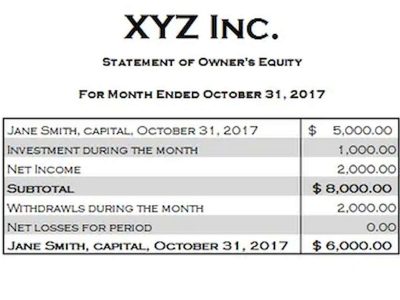
Whether it is a felony or not depends on the law of the state where payroll fraud is committed. However, the more money a fraudster steams from the company, the harsher the legal consequences. Remember, there are several types of payroll fraud, and it is essential to regularly review your company’s payroll and accounting records for discrepancies. Employers may misclassify employees in some situations to save money on items like unemployment taxes, payroll taxes, and employee benefits.
- Getting into legal battles, contacting authorities, and attempting to recover stolen money can make for difficult—and expensive—situations.
- Understanding what employee fraud is can help you prevent it before it even happens.
- It can be motivated by personal financial gain, or it can be done to manipulate a company’s financial statements.
- These audits can take place monthly, quarterly, or even yearly, depending on the size and complexity of your payroll.
- Get up and running with free payroll setup, and enjoy free expert support.
- Install security cameras at work sites so that any potential workplace injuries are recorded as evidence.
- Read on for a definition of employee fraud, signs to be on the lookout for, and employee fraud examples.
Here are some common payroll frauds that can be avoided by being vigilant. Staff commits payroll fraud by indulging in malpractices like time theft when they clock in the hours that they do not work. Some employees secretly increase their compensation rate by manipulating the payroll system, which can amount to payroll fraud. Payroll fraud is typically conducted by a human resources staff or someone with simple access to the company payroll system.
Advance Fraud:
Examples include embezzlement of amounts that are claimed to have been paid to employees, evasion of financial benefits for which staff members should be legally eligible, and other similar offences. payroll fraud is the theft of money from a business via the payroll processing system. It can be carried out by individual employees or by the employer (most recently relating to Furlough Fraud). Another way to prevent payroll fraud is to regulate employee behavior (especially when controlling employee expenses).

Additionally, auditors assess whether proper segregation of duties exists within the payroll process and examine the approval process for payroll transactions. They also verify that payroll changes, such as salary increases, are authorized by the appropriate personnel and supported by valid documentation. When fraud is detected, operations may need to pause while a thorough investigation is conducted. This can lead to delays in delivery of service or product, impacting both the bottom line and customer satisfaction.
How Can St Pauls Chambers Assist Payroll Fraud Cases?
Some of the stolen PII was obtained via cyberattacks against companies that maintain PII databases, including Experian, Yahoo, LinkedIn, and Facebook. In response to pandemic-related shutdowns, the U.S. government enacted several stimulus measures that included enhanced unemployment benefits. Enacted March 18, 2020, the Families First Coronavirus Response Act increased flexibility for state unemployment insurance agencies and provided additional funding to respond to the COVID-19 pandemic. The best way in doing so is to reconcile your payroll at least quarterly with someone other than the person who runs your payroll.
- These are just a few of the warning signs to watch out for—remember, payroll fraud can take many forms.
- Lastly, ‘benefits fraud’ typically involves employees who falsely claim benefits, such as health care, which they aren’t entitled to.
- There are two common types of payroll fraud, the first being timecard falsification, which can be easily caught through the reconciliation and employee review process I just mentioned.
- With our payroll processing software, you can easily manage payroll while keeping your staff’s information safe from malicious third parties.
- Companies may misclassify employees in the payroll system to reduce staffing costs and overall tax bills.
When employees misclassify their status in the payroll system, they steal the benefits they are not entitled to. Sometimes, employers misclassify workers willingly to save costs like unemployment taxes, staff benefits, and payroll taxes. These are just a few of the red flags to look out for—remember, payroll fraud can take many forms. As a result, you should conduct frequent audits of your company’s payroll and accounting records. Examples of payroll fraud by employers include falsified timesheets, giving unauthorized bonuses and paying fake or terminated employees. Perhaps the most common type of payroll fraud is the padding of time sheets by employees, usually in small enough increments to escape the notice of supervisors.
Payroll fraud: guide to recognition and prevention
The advance was granted, but the CFO left the company without repaying the funds, leading to a major loss for the company. The person who processes payroll should not be the same person who authorizes it. Likewise, the person writing the checks should not be the one reconciling the bank statements.
First, employees may pad their hours on the timesheet by clocking extra hours they didn’t work. Or, secondly, employees may access the payroll system to falsify their wages and increase their hourly pay rate. Payroll fraud is frequently performed internally, although third parties can also perpetuate it. Third-party perpetrators target individual employees or company records in W-2 scams and payment diversion schemes. When employees make sales or reach certain milestones, they may be eligible for incentives or commissions.

